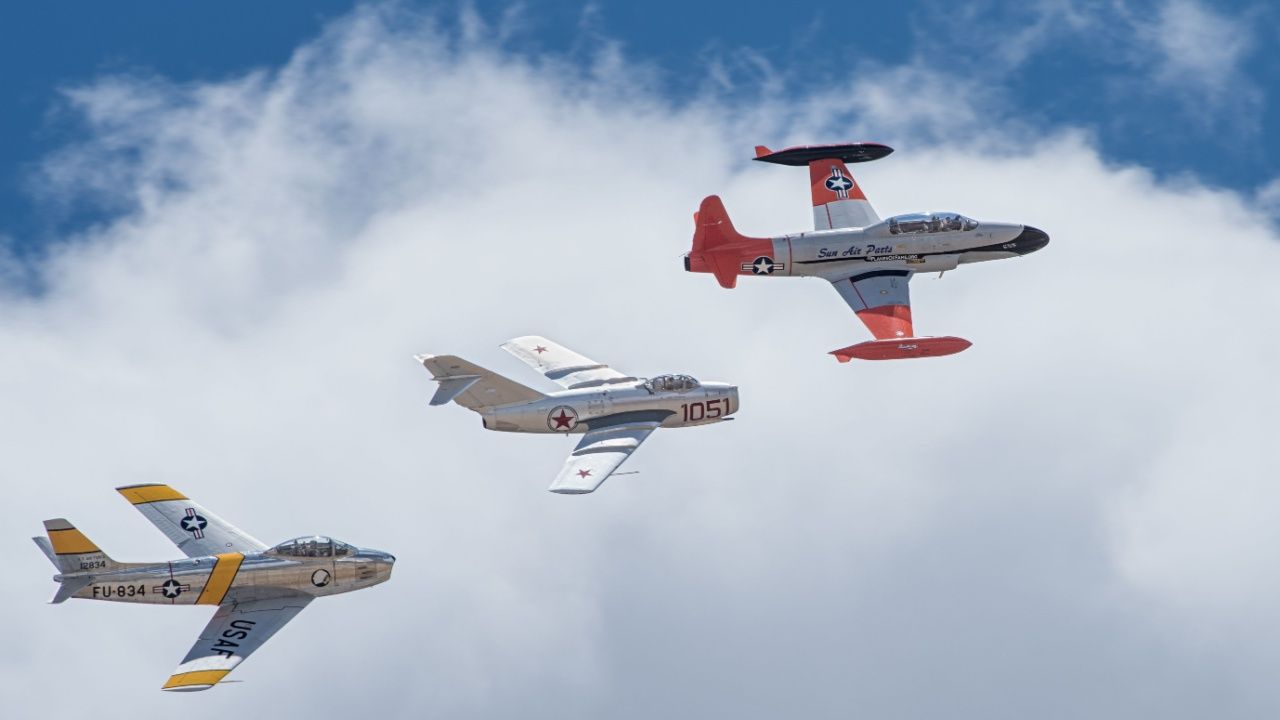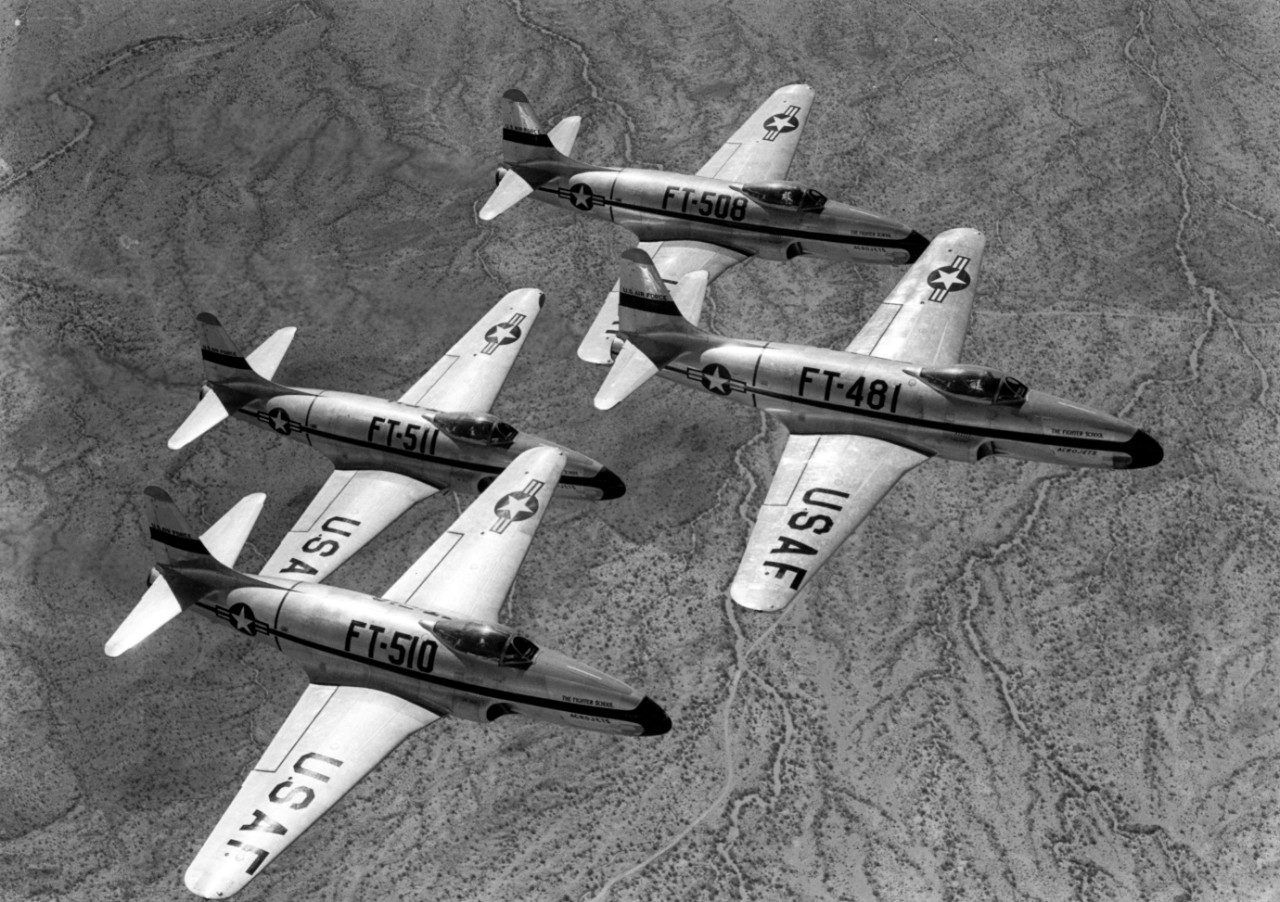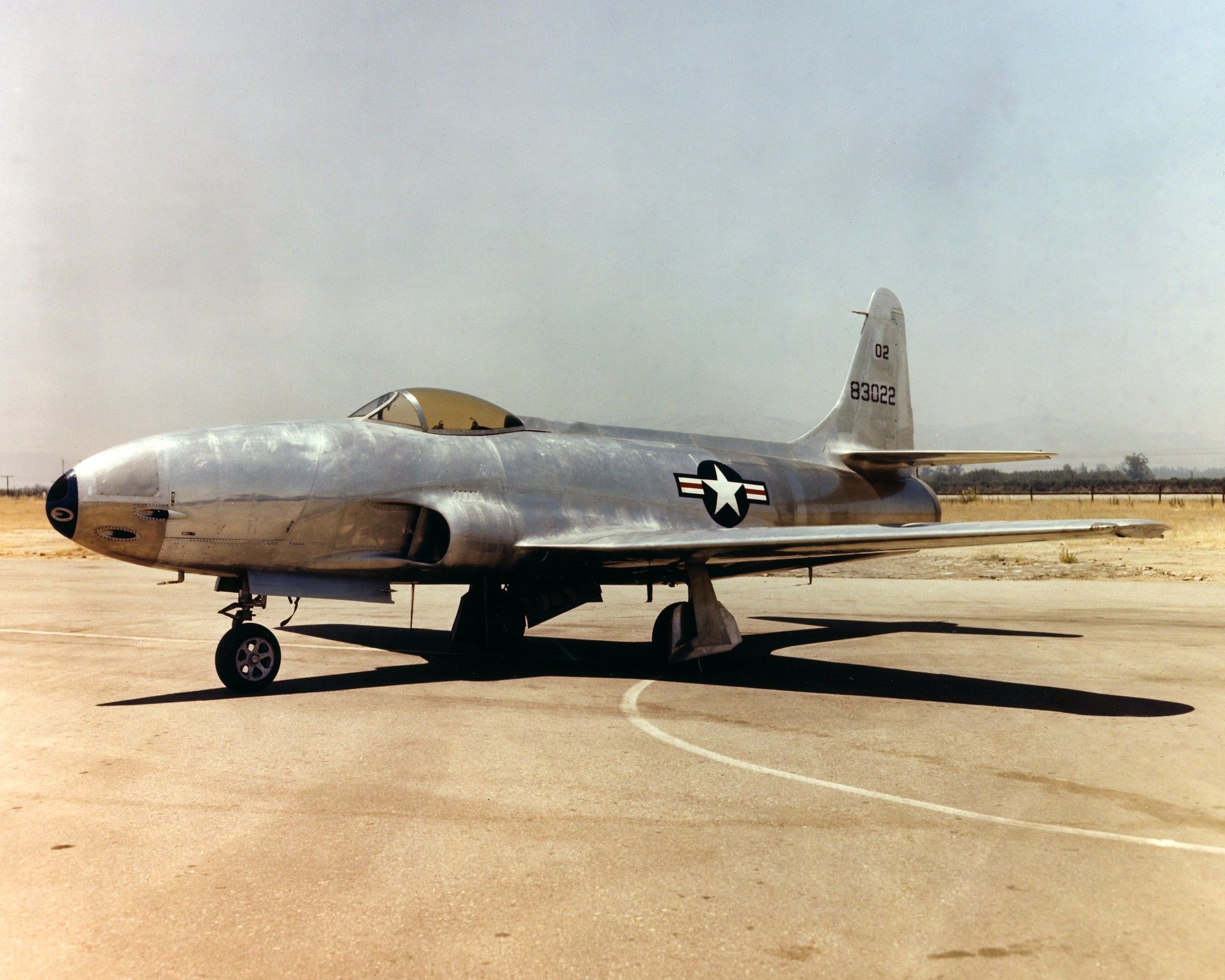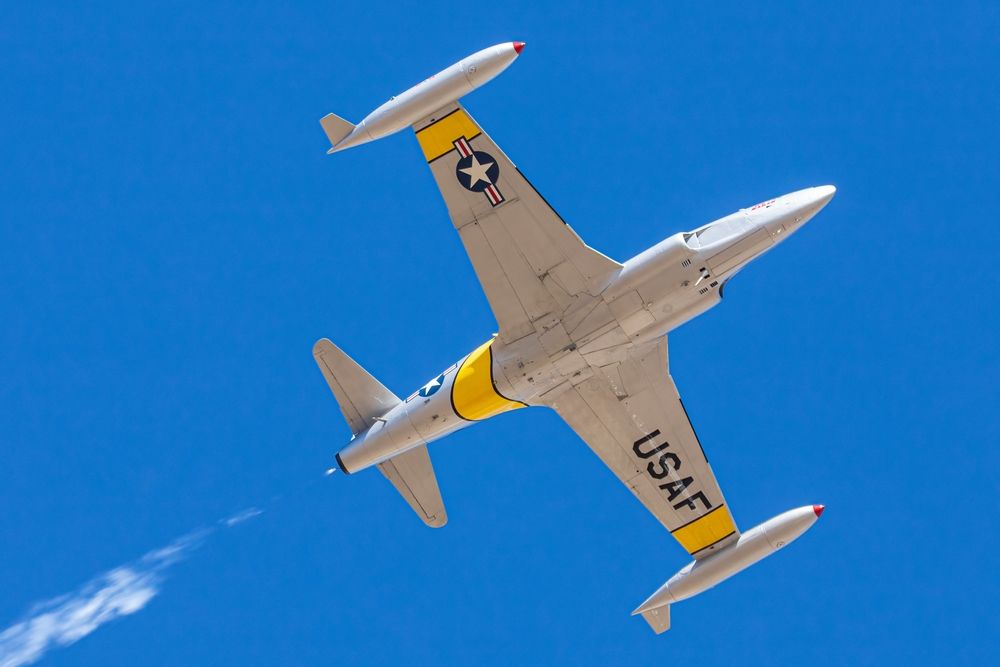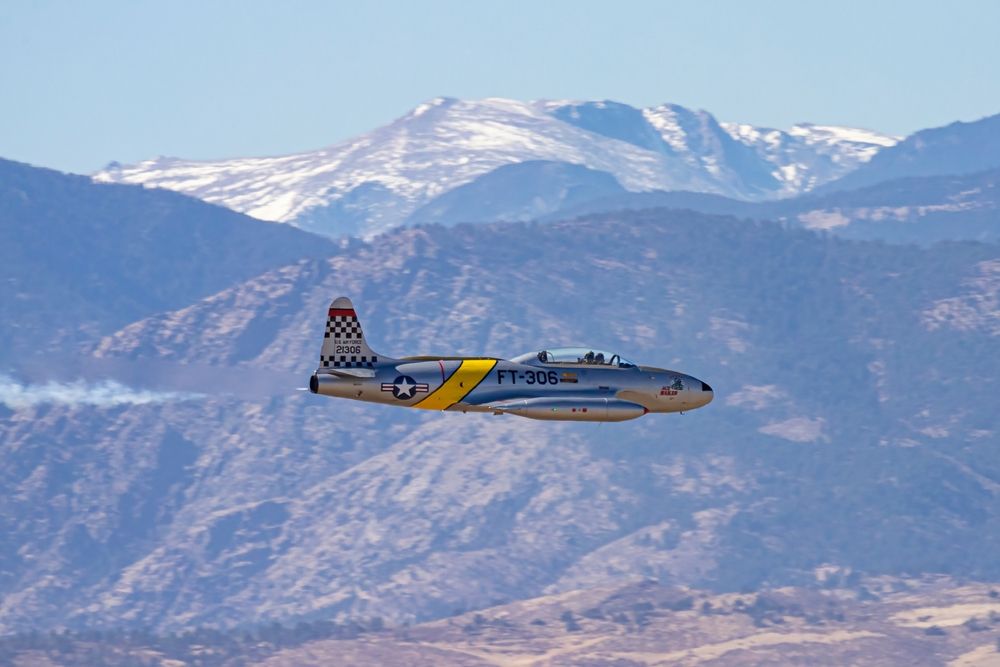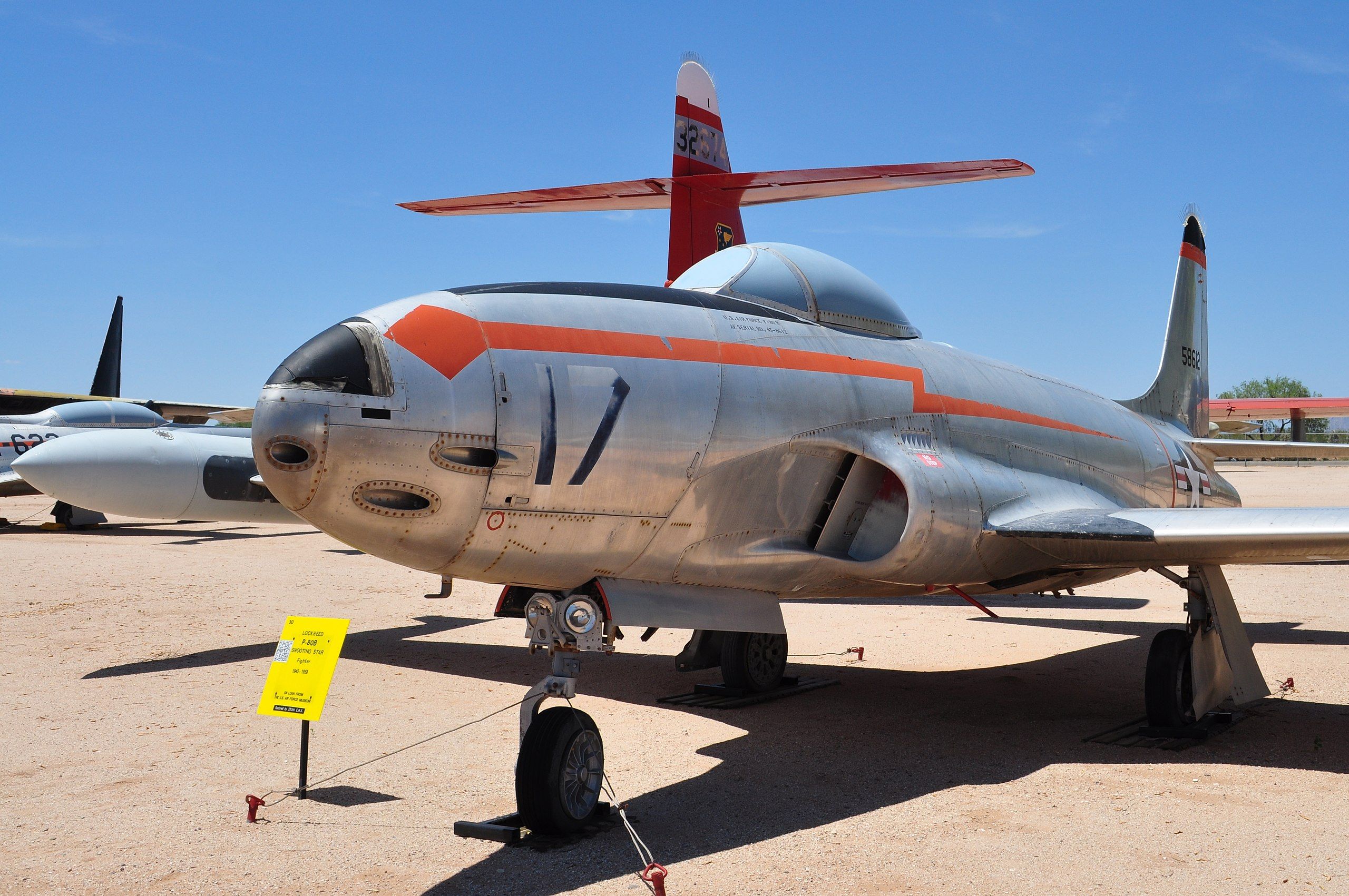Summary
- The Lockheed P-80 Shooting Star was the first American fighter jet, impacting jet technology development.
- US initially lagged in jet development, aided by British technology transfer; first turbojets were British too.
- P-80 acted as a testbed for US jet technology, led to developing successful T-33 jet trainer.
For the United States Army Air Force (later US Air Force), the Lockheed P-80 Shooting Star was the first of its kind – it was the first American fighter jet used operationally. Germany and Great Britain led the race to develop jet fighters in WWII, fielding them before the end of the war. The US and Japan were nearly fielding them by the war’s end (the USSR was far behind). The Lockheed P-80 Shooting Star was designed and built by Lockheed in 1943 but did not see combat in WWII.
How the US was an early jet laggard
Even though the P-80 was rendered largely obsolete within around half a decade of coming into service, it greatly impacted the development of jet technology. Early on, the British and Germans led jet development; the US was an early laggard that even trailed Italy in 1943. Years later, the Soviets reversed-engineered British jet engines post-war to catch up.
Photo: Lockheed Martin
American development of jet aircraft was greatly aided by the transfer of British technology to the US (Britain sent all of its jet engine, radar, and proximity-fuze research to the US in the fall of 1940). Historynet.com goes so far as to say of early P-80 development, “…had it not been for the British, all they would have displayed on rollout day was the world’s fastest glider. It would have had no engine.” The first Allied turbojets were the British Whittle W.1 and the de Havilland’s Halford H-1.
|
Lockheed P-80 timeline: |
|
|---|---|
|
First design work: |
1943 |
|
First flight: |
1944 |
|
Introduction: |
1945 |
|
Retired by US: |
1959 |
|
Final retirement (Chile): |
1974 |
Even so, Lockheed was instructed to focus on improving the P-38 Lightning over pursuing jet technology. But then it became known that the Germans were developing the Messerschmitt Me-262 jet fighter, and the need for the US to develop jet planes became obvious.
P-80 – the US fight jet testbed
Now a latecomer, the US got to work and developed the General Electric J33 turbojet engine (although a British de Havilland Goblin engine powered the first prototype). The first XP-80 flew in January 1944 at Murco Army Airfield, and soon, the prototype (called Lulu Belle) became the first US aircraft to exceed 500 mph in level flight.
Photo: BlueBarronPhoto l Shutterstock
The second prototype, the XP-80A, differed significantly from the first. It was 25% heavier, powered by the J33 engine (with another 1,000 lbs of thrust), almost two feet longer, and also had a wider wingspan. These prototypes were early testbeds where Lockheed worked to develop jet technology and how a fighter jet should be designed.
It should come as little surprise that the first P-80s had an abysmal accident record. This was not necessarily from poor design but rather from pilot training. All the pilots had learned to fly very different propeller aircraft, and there was no one to train a new generation of jet pilots. The third prototype crashed on takeoff in October 1944, killing the pilot after the engine flamed out. Another early victim was Richard Bong, an American ace of aces (he forgot to turn the auxiliary fuel pump on for takeoff).
|
Lockheed P-80 specifications |
|
|---|---|
|
Length: |
34 feet 5 inches |
|
Wingspan: |
38 feet 9 inches |
|
Max take-off weight: |
16,856 lb |
|
Powerplant: |
1 × Allison J33-A-35 centrifugal compressor turbojet |
|
Thrust: |
4,600 lbf dry thrust |
By the time the P-80 was over 2.5 years old, there had been 61 accidents, and it was still in limited production. One lesson from the P-80 was that Lockheed realized it needed a jet trainer.
Photo: BlueBarronPhoto l Shutterstock
For this, the P-80 was lengthened by 4 feet and 6 inches to fit a back-seat instructor pilot. The result was Lockheed’s most successful jet trainer – the T-33 “T-bird.” The T-33 was so successful that Lockheed built more than three times as many of them as Shooting Stars and they went on to train as many as a quarter million jet pilots.
The last T-33 trainers were retired by the U.S. Air National Guard in 1987, Bolivia was the last air force to retire them in 2017, and Boeing finally retired the last of its T-33 Chase Planes in 2020.
Birth of the US jet age
Two pre-production models saw very limited service in Italy as the war in Europe came to a close (these were quickly lost to accidents and didn’t see combat). However, only five years after the end of World War II, the US found itself embroiled in another major war—the Korean War—where the Shooting Star saw extensive combat. By this time, the US had 900 Shooting Stars and was around half the Air Force’s fighter inventory.
|
Lockheed P-80 performance |
|
|---|---|
|
Max speed: |
594 mph (Mach 0.76) |
|
Cruise speed: |
439 mph |
|
Ferry range: |
1,380 miles |
|
Range: |
825 miles |
The P-80 Shooting Start quickly became a PR tool and set various records. It was the first to make the first-ever jet-engined transcontinental crossing in January 1946. A modified P-80R (dubbed Racey) set the world’s absolute speed record of 623.7 mph (broken two months later by a Douglas D-558-1 Skystreak reaching 641 mph).
The development of fighter jets progressed rapidly at this time. The new swept-wing Soviet MiG-15 outclassed it (it was 100 mph faster), and the Shooting Star quickly took a back seat to the brand-new F-86 Sabre (which the US rushed into the conflict).

